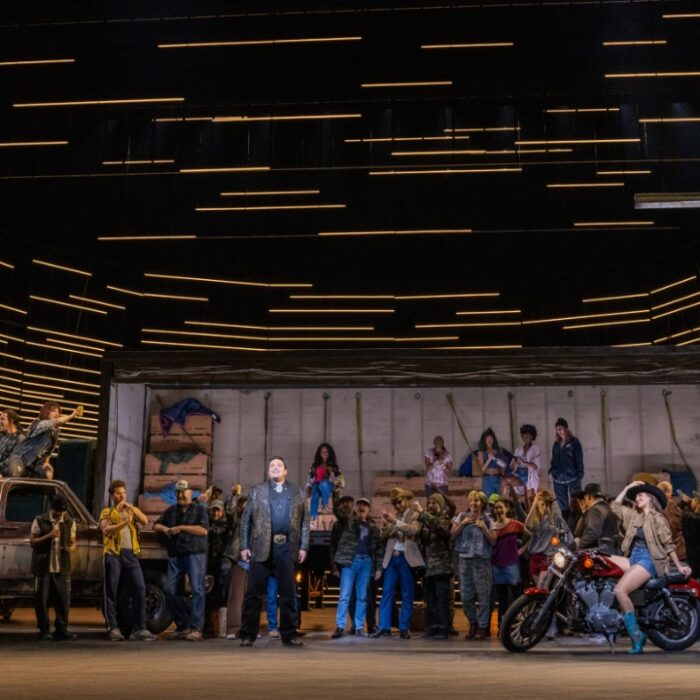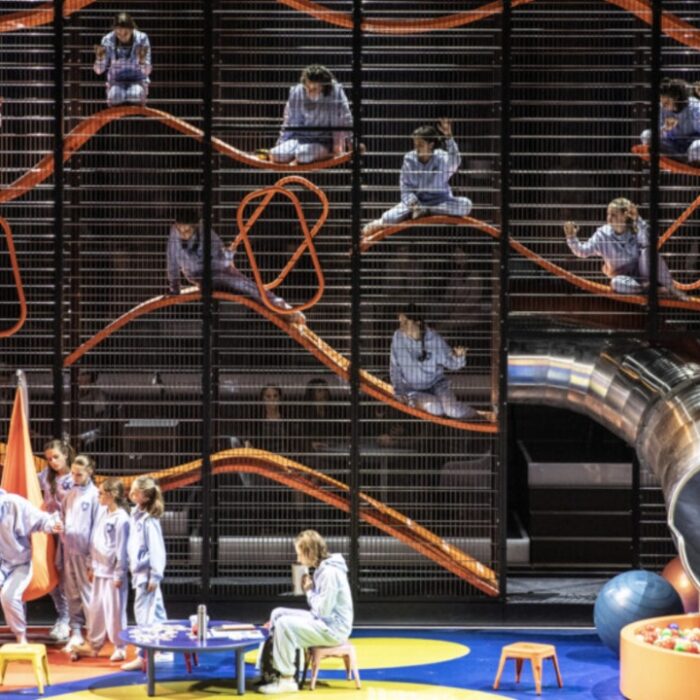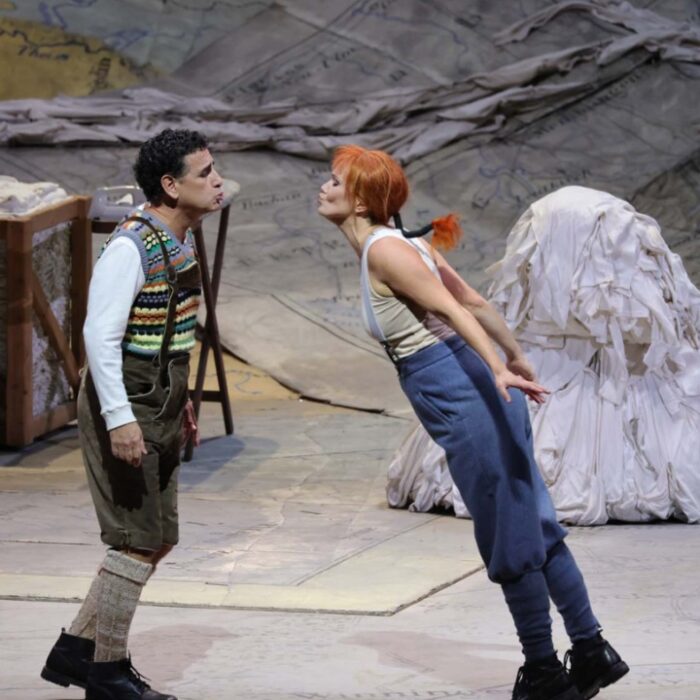
Mostly Mozart Festival 2019 Review: The Black Clown
Tines and Company Captivate with Work by Langston Hughes
By Logan Martell(Photo Credit: Richard Termine)
July 24, 2019, saw the New York premiere of “The Black Clown,” a new work adapted from the Langston Hughes poem of the same name, with music by Michael Schachter and directed by Zack Winokur.
Exploring the struggles of the African-American experience, this powerful work blends opera with the styles of gospel, vaudeville, and jazz, allowing for a unique musical atmosphere capable of sudden changes in the middle of numbers, or more fluid transitions between them. Speaking on the poem and the resonance it held with him, Davóne Tines says: “When I first read ‘The Black Clown,’ it was incredibly striking that Langston Hughes had put words to the feelings, thoughts, and ruminations that I had held deeply, internally, and personally for a very long time As a young, Black, curious person, you start to understand that there is a larger diaspora of thought in terms of engaging the reality of human experience. As an artist, I should be able to be as honest as possible when I stand in front of people. That means I need to find an explicit connection to the things I say in song and in concert. This poem was so far beyond song—it was inevitable that I would need all the forces of opera and theater to attempt to do it justice.”
One of the most prominent themes of “The Black Clown” was, fittingly, the suffering which lies hidden beneath the joyous mask of song and dance which performers wear. Following a highly-spirited ensemble number titled “Strike Up the Music,” with choreography which blurred the lines between swing and ballet, the outpouring of energy from the ensemble, as well as the huge reception it received from the audience, were grimly undercut by Tines’ now-outraged repetition of the title, as the shadows of slaves were beaten from behind a screen.
Keeping the Crowd on their Toes
This dramatic technique of spectacle followed by subversion made a poignant return in the number titled “Freedom!” The curtain opened to reveal an ensemble member dressed as Abraham Lincoln, with stilts in the legs of his enormous trousers, and a giant copy of the Emancipation Proclamation in his arms. This upbeat vaudeville number featured choreography which utilized chains and even nooses in ways that were both inventive and shocking, proving itself to be, in both senses of the term, “black humor.”
After a section with tap dancing and a flag-waving march, the music pivoted to a waltz, the mocking, overly-sophisticated feeling of the music and dancing was humorously bolstered by members of the ensemble, clad in tuxedos and monocles, casting indignant expressions towards the audiences. The excitement returned when the music took on a lively gospel energy, with quite a few members of the audiences matching the rhythmic claps coming from the circle of performers onstage.
As the curtain fell on the closing tableau, Tines’ recitation, joined by the downward melodic lines of the brass, made for a deflating transition as the curtain reopened on the still-frozen actors, now sadly with a sign that read “Colored Section.”
While the set itself was not overly-elaborate, it achieved much in terms of visual symbolism. One such example came during the number “Sometimes I feel Like a Motherless Child,” where Davóne and another actor, shouldered an empty chair with a heartbroken, nearly-sobbing expression, bearing this absence as they slowly walked onwards.
Another example came later as Tines’ character attempts, and then fails, to climb a ladder which, due to its brightness, was almost too-white; to call this use of symbolism heavy-handed would ignore the fact that they deliberately weren’t pulling their punches.
Not Pulling Punches
Speaking of not pulling punches, the singing itself employed as many shades as needed to capture the complexity of emotions and interpersonal relations.
Davóne Tines’ bass-baritone was introduced in the context of a spoken-word poet or narrator, complete with microphone. His firm and smooth delivery flowed to deeper sentiments as he served as not just narrator, but a character very much a part of the unfolding drama. One of his vocal qualities put on full display was his ability to sustain a phrase to great lengths, able to end them with soft and gentle upward risings, or drag them down to grieving, ruinous depths.
After the open mic introduction, where Tines’ voice ranged from conversational to crooning, his operatic timbre came to the forefront by the second number “I Am the Fool.” Tines showed great support in his singing, managing to carry a phrase while dressing himself in the shirt and jacket needed to complete his costume, and even while falling to one knee while slapping the other in a burst of scornful laughter.
For all the power he brought vocally, Tines also had moments of surprising delicacy, such as his softly-soaring repetition of “hallelujah” following the harmonies and counterpoint of the ensemble in “Nobody Knows.” The ease at which Tines delivered the closing sounded as if he were floating just above the point where his falsetto register began. While their roles did not feature any definite characters, the ensemble of performers undoubtedly brought tremendous energy and passion to the personalities they embodied.
An Unsung Victory
For all the fervor, grief, perseverance, and elation found within, “The Black Clown,” ends with a simple, matter-of-fact assertion of one’s identity. After the standing ovation given to the penultimate number “Say to all the Foemen,” the show resumed through the applause which finally died down to allow one to hear Tines’ closing words: “Cry to all the world, that all might understand: I was once a black clown but now – I’m a man!”
Lovers of opera and modern works alike can find much within “The Black Clown” to inspire or remind them that from struggle comes victory, from ignorance comes understanding, and from hate comes love.


